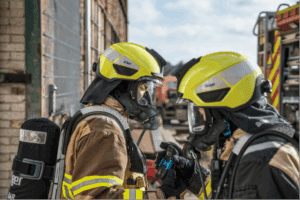Fire Buyer editor Louis Curtis explores the techniques, training and technology available to rescue services in urban environments
Human evolution’s inexorable advance continues. There was once a time I recall that the global population continued to grow exponentially with each passing year. Government fears of overpopulation were rife across the globe, with scientists working diligently to verify the overpopulation scares and, if their worst fears were made manifest, seek solutions to rectify it. I remember very vividly the mild panic the world felt, staring in the face of this apparent inevitability.
Of course, as we all know, this future did not come to pass – at least, not in the way we envisioned. The human population curve has shallowed in the last decade, with birth rates in some countries like Japan and South Korea recording all-time lows since records began. As an additional side piece of trivia: China, a country that staunchly enforced a “one child policy” in many households for many years, has recorded no increase to birth rates – even with this restriction lifted in 2016. Instead of seeing our society advance far beyond what our infrastructure can keep up with, we are starting to see in recent years advancements in societal engineering finally catch up with population rates. Public buildings are becoming smarter: integrated security and safety systems are now communicating wirelessly with each other in ways that we had once thought only possible in science fiction; urban planning is now integrating biodiversity and residential socialising into their designs, while not skimping on the safety of its residents; global warming’s ticking doomsday clock has pushed companies and institutions to put sustainability at the forefront of their interests, with more environmentally-friendly products and practices being put into place.
‘Where is he going with this?’, I’m sure you’re asking yourself – the point is, with bigger and more intelligent buildings and infrastructure, more people inside them, as well as increasingly complicated international relations, especially in recent years – it’s absolutely crucial to have contingencies in place for when these systems go wrong. We are no longer dealing with small communities anymore; disasters in more densely-packed population centres exponentially increase the potential casualties, and the emergency services must rise to the call. Today, we will be taking a closer look at the current technologies and solutions available to rescue crews operating in the belly of the concrete jungle, with some real-world scenarios where rescue has succeeded… and where it has failed.
To read the rest of this feature, see our latest issue here.
Never miss a story… Follow us on:
International Fire Buyer
@Firebuyer
Fire Buyer
Media Contact
Louis Curtis
Editor, International Fire Buyer
Tel: +44 (0) 1622 823 922
Email: [email protected]




































